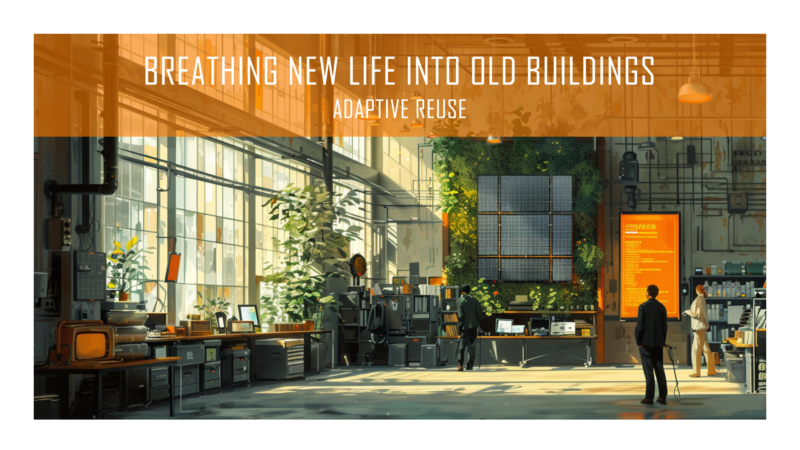 In today’s architectural landscape, the concept of adaptive reuse stands as a beacon of sustainability and innovation. It’s here, at the crossroads of the past and the present, that Layer 10 positions itself, focusing on the technology that becomes an intrinsic part of the space post-construction. This approach not only preserves the architectural and historical integrity of buildings but also ensures they meet contemporary standards of functionality, comfort, and environmental responsibility.
In today’s architectural landscape, the concept of adaptive reuse stands as a beacon of sustainability and innovation. It’s here, at the crossroads of the past and the present, that Layer 10 positions itself, focusing on the technology that becomes an intrinsic part of the space post-construction. This approach not only preserves the architectural and historical integrity of buildings but also ensures they meet contemporary standards of functionality, comfort, and environmental responsibility.
Adaptive Reuse: An Overview
Adaptive reuse represents a strategic pivot from conventional construction practices, emphasizing the repurposing of old buildings for new uses. This methodology not only conserves resources and reduces waste but also breathes new life into structures that might otherwise be overlooked. The essence of adaptive reuse lies in its ability to marry the rich narratives of historic spaces with the demands of modern society, a mission Layer 10 champions by embedding cutting-edge technology into these transformed spaces.
The Role of Technology in Adaptive Reuse
At the heart of successful adaptive reuse projects is the innovative use of technology. Layer 10 specializes in this area, focusing on the implementation of smart building solutions, IoT integrations, and AI-driven systems that enhance the livability and sustainability of repurposed spaces. From ensuring optimal energy efficiency to providing state-of-the-art security, the technology we integrate is key to making historic buildings viable and vibrant for future use.
Smart Building Tech in Historical Spaces
The challenge of introducing modern technology into historic buildings is met with creative and respectful solutions by Layer 10. By using non-intrusive installation techniques and customizing systems to fit within the unique constraints of each building, we ensure that the integration of smart technology not only respects but enhances the historical character of the space. This thoughtful approach allows us to provide contemporary amenities while preserving the essence that makes these buildings truly special.
AI and Data Analytics: Planning for the Future
In adaptive reuse, planning for the future means anticipating changes and preparing spaces to adapt. Layer 10 utilizes AI and data analytics to predict and plan for these evolutions, ensuring buildings are not just prepared for today but are future-ready. This foresight allows for adaptive reuse projects to be not only sustainable but also adaptable, capable of evolving with technological advancements and changing human needs.
Looking Ahead: The Future of Adaptive Reuse
The future of adaptive reuse is vibrant and dynamic, driven by continuous technological innovation and a commitment to sustainable development. Layer 10 is at the forefront of this movement, exploring emerging trends and technologies that promise to further enhance the adaptability and sustainability of repurposed spaces. Our vision for the future is one where technology and history coexist harmoniously, creating spaces that honor their past while embracing the possibilities of the future.
Bridging History with Innovation
Layer 10’s approach to adaptive reuse underscores our belief in the power of technology to transform spaces. By focusing on the integration of smart, sustainable technology into historic buildings, we advocate for a future where architecture preserves its heritage while advancing towards a more sustainable, efficient, and user-focused tomorrow.
Join us in this exciting journey as we continue to explore and implement innovative solutions in the realm of adaptive reuse. Share your thoughts, and let’s together redefine the future of our built environment.
Discover more about our approach
Let’s build tomorrow, today.